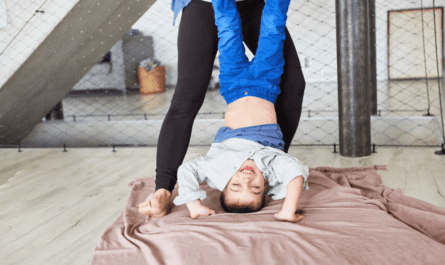Introduction
Teaching a 7-year-old to do a handstand can be a fun and rewarding experience. With a bit of practice and patience, your child will be able to master this impressive skill. Here’s a step-by-step guide to help your little one learn how to do a handstand safely and correctly.
Step 1: Warm-Up Exercises
Before attempting a handstand, it’s important to warm up. This helps to prevent injuries and prepares the muscles for the activity.
- Jumping Jacks: Do 10-15 jumping jacks to get the blood flowing.
- Stretching: Stretch the arms, shoulders, and wrists. Simple arm circles and wrist stretches will do.
- Forward Roll: Practice a few forward rolls to get comfortable with being upside down.
Step 2: Finding a Good Spot
Choose a safe and open area for practicing. A grassy lawn, a gym mat, or a soft carpet are ideal. Make sure there’s enough space around to avoid any obstacles.
Step 3: Starting Position
- Stand Up Straight: Begin by standing up straight with feet together and arms by your sides.
- Arms Up: Raise your arms straight up over your head, with your biceps close to your ears.
Step 4: The Kick-Up
- Lunge Forward: Step one foot forward into a lunge position. This will be your kicking leg.
- Hands to the Ground: Place your hands on the ground about shoulder-width apart, just in front of your front foot.
- Kick Up: With your front leg on the ground, kick your back leg up into the air. Your front leg will follow, lifting off the ground.
Step 5: Balancing
- Straight Body: Try to keep your body straight as you kick up into the handstand. Imagine a straight line from your hands to your toes.
- Hold for a Moment: If possible, try to hold the handstand for a second or two. It’s okay if you can’t do it right away. Practice makes perfect!
Step 6: Coming Down
- Controlled Descent: To come down, let your legs fall back down gently one at a time. Try to land in a lunge position to maintain balance.
- Stand Up: Stand up straight again and get ready to try another handstand.
Tips for Success
- Practice Against a Wall: Practice kicking up into a handstand against a wall. This helps with balance and builds confidence.
- Spotting: Have a parent or coach spot you by holding your legs as you kick up. This provides extra support.
- Stay Calm: Don’t get frustrated if it takes time. Handstands require practice and patience.
Safety First
- Supervision: Always practice under adult supervision to ensure safety.
- Soft Surface: Use a soft surface like a mat to cushion any falls.
- Listen to Your Body: If you feel any pain or discomfort, stop and rest.
Conclusion
Learning to do a handstand is a wonderful achievement for a 7-year-old. With consistent practice and the right guidance, your child will be handstanding in no time. Remember to keep it fun and encouraging. Happy handstanding!





